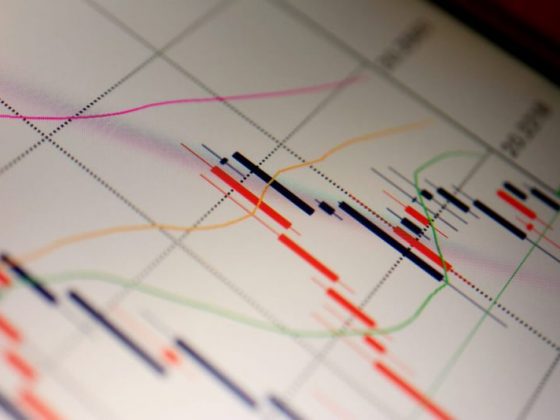Institutional Trading: A Beginner’s Guide
Institutional trading is when a company or organization trades and invests money on behalf of other people. This beginner’s guide will explore how institutional trading works, focusing on the roles these entities play in the market.
Institutional trading definition
So, what is the very definition of institutional trading? This type of trading entails buying and selling financial instruments by institutions through traders. Pensions, hedge funds, insurance companies and mutual funds are the main examples of institutional traders and investors.
Institutional trading involves large-scale buying and selling of securities by institutional investors. These investors include pension funds, mutual funds, hedge funds, insurance companies, and exchange-traded funds (ETFs).
They have a significant impact on the share price and the overall price of a security. Unlike retail traders, these large entities engage in transactions that can move markets. When institutional investors buy or sell, they do so with strategies that influence investing trends.
Institutional investors can take advantage of the multi-trading platform to quickly and inexpensively provide margin trading services to their clients. Besides Metatrader 4 and 5, they mostly rely on Iress trading software to help them adapt and thrive.
Types of institutional trading
In general, there are four institutional trading types. We talk about hedge funds, mutual funds, investment banks and pension funds managers.
Hedge funds
Access to large amounts of capital is required in order to operate as a hedge fund. Therefore, their clients are also institutional investors like pension funds, investment funds, and companies.
They have complete freedom in managing their clients assets. Hence, these investors are also called free managers. Their trading strategies are complex and they usually trade on derivative markets such as CFDs , futures, options, etc. They try to optimize their clients portfolios in both bearish and bullish market trends.
Their main strategy is arbitrage.It entails buying and selling correlated assets at the same time. They profit from buying a cheaper version of an asset, whilst simultaneously selling a more expensive version.
Mutual or investment fund managers
These funds gather capital provided by various individual and collective investors. Each investor in a mutual fund owns shares, which represent a part of the holdings of the fund.
Mutual funds are managed by professional fund managers who make investment decisions on behalf of the shareholders. By investing in a range of securities, mutual funds offer diversification, which can help reduce risk compared to owning a few individual stocks or bonds.
Pension funds manager
Pension fund managers are investors who handle clients’ pension money to make profits.They may invest in securities, stocks, bonds, real estate, and other types of investments. The goal is to achieve growth while managing risk, ensuring there are sufficient assets to pay future retirees.
Investment banks
Investment banks help with financial transactions like IPOs, mergers, and reorganizations. They also give advice and can act as brokers in the market. Examples include JP Morgan Chase and Morgan Stanley, which are also key players in the institutional trading sector.
Institutional trading strategies
Institutional trading strategies cover a wide range of methods for managing large portfolios. Here are the most important ones.
The Long-Term Playbook
Institutional investors focus on opportunities for long-term growth that match their goals and risk tolerance. Large investors like pension funds and sovereign wealth funds invest over long periods. They increasingly use metrics such as economic value added and R&D efficiency to assess long-term performance potential.
This approach is similar to Warren Buffett’s strategy. It focuses on capturing major opportunities while committing to investments for the long haul.
Diversification Tactics
Institutional traders use strategies that promote long-term value and diversification. With significant capital, they create portfolios spread across various assets. This diversification reduces risk and takes advantage of favorable market prices.
Techniques like index rebalancing help keep risk levels steady over time. Institutional traders also mix different uncorrelated trading strategies to protect against risks associated with any single asset or market trend.
Advanced Technical Analysis
In decision-making, institutional traders focus on key elements of advanced technical analysis, such as:
Evaluating the financial health of investments.
Understanding market directional trends.
Analyzing chart patterns.
Finding the right moments to start and end trades.
Institutional crypto trading
Some institutional traders invest in the crypto market, especially in cryptocurrencies like bitcoin or Ethereum. But according to analysis, only about 10.33% of Bitcoin’s total supply is held across ETFs, funds, private and public companies.
The creation of trust and regulation improvements will certainly entice many institutional traders to diversify their portfolios in crypto. Once more institutional investors do so, there will be a rise in liquidity as well. A higher trading volume in crypto will increase liquidity of the market.
Institutional traders vs retail traders
First of all, retail traders trade using their personal brokerage account. Institutional traders trade on behalf of institutions, corporations or banks, therefore they trade for accounts they manage.
Access to online trading platforms has narrowed the gap regarding the access to various types of trading securities. Every retail trader today can trade in real time the same assets as institutional inventors. However, retail traders still don’t have access to IPOs, swaps and futures. Also, institutional traders can negotiate trading fees.
Their strategies and trading tools are more sophisticated from those of retail investors. Also, they are subject to less strict regulations than retail traders.
The post Institutional Trading: A Beginner’s Guide appeared first on FinanceBrokerage.


